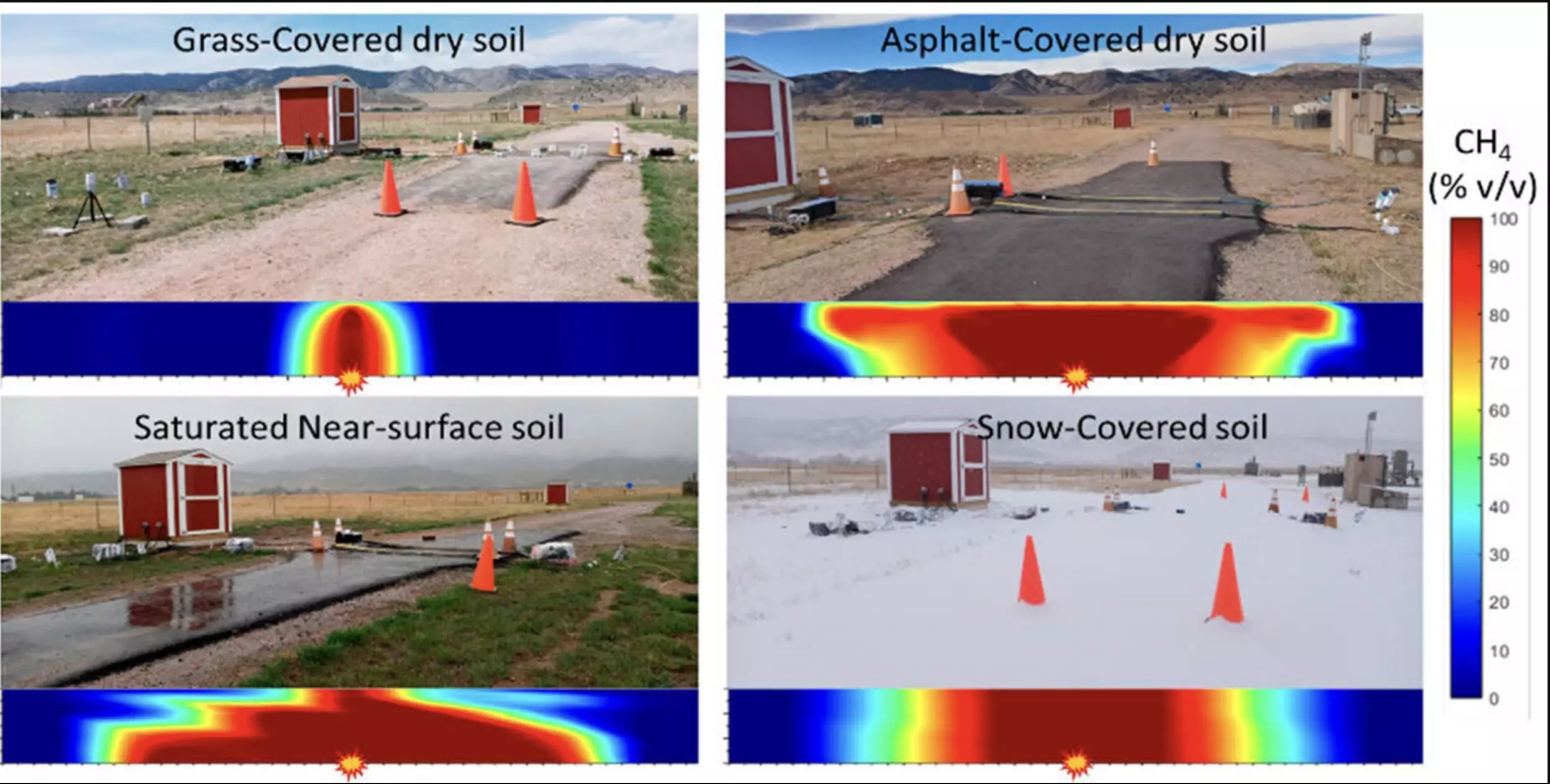Natural gas leaks from underground pipelines present profound safety and environmental challenges, a reality underscored by recent research from a team at Southern Methodist University (SMU). These leaks can transform from localized hazards into widespread threats based on surface conditions. This article disentangles the critical findings of the study and reflects on their implications for public safety and environmental sustainability.
The innovative research revealed that the presence of water-saturated ground, snowfall, or even asphalt can significantly amplify the reach and speed of escaping natural gas, allowing it to travel up to three to four times farther than in dry soil. Additionally, the gas can migrate at an alarming pace—3.5 times faster than observed under drier conditions. Such findings challenge previous assumptions about the predictable nature of gas leaks, shedding light on previously underestimated risks.
The Experiment: A Deep Dive into the Methods
Led by Kathleen M. Smits, chair of Civil and Environmental Engineering at SMU, the research employed controlled experiments conducted at Colorado State University’s Methane Emissions Technology Evaluation Center (METEC). Various surface conditions were simulated to study their influence on gas escape patterns. Scenarios included grass overlying both dry and saturated soils, as well as asphalt, both in dry and wet states.
Gas was deliberately released at measured rates over extended periods, replicating real-world leak situations. This approach allowed for precise tracking of how methane escaped from the cracked pipeline, informed by specific topographical variables. Through this method, the researchers gained unprecedented insights into the mechanics of gas migration, specifically how environmental factors can alter gas behavior significantly.
The Findings: What They Mean for Safety and Environment
One of the most alarming discoveries was that surface conditions like snow or wet asphalt immobilized the gas at the ground level, compelling it to move downward and outward from the leak site. The analogy provided by researcher Navodi Jayarathne, likening soil to “Swiss cheese” with gas navigating through its gaps, encapsulates the potential proliferation of risks. The researchers discovered that the gas could remain trapped beneath these layers, significantly elevating safety hazards.
In a shocking revelation, the study indicated that even after the termination of the gas leak, methane concentrations could remain dangerously high for up to 12 days due to the impermeable surface conditions. This persistence suggests an elevation in risk for first responders and nearby properties even after initial containment measures have been executed.
Implications for First Responders and Policy Makers
With these nuanced understandings of gas leaks, the study unequivocally calls for heightened awareness among first responders. Traditional training may not adequately prepare them for the characteristics of gas leakage in fluctuating surface conditions. Emergency response protocols need re-evaluation to incorporate these critical factors, ensuring that first responders can gauge risks effectively and respond accordingly.
Furthermore, environmental implications from methane, the principal component of natural gas, are significant. As the second-largest contributor to global warming, methane leaks directly impact climate change. Experts emphasize the urgency in identifying and prioritizing leak sites not just for immediate safety concerns but also to mitigate long-term environmental damage.
Future Directions: Bridging Research and Real-World Application
As this research paves the way for improved understanding, future studies could further elucidate how different soil types and conditions elsewhere might affect gas behavior. It opens a broader dialogue on how pipeline integrity, surface monitoring, and real-time data assessment can work together to protect communities and ecosystems.
While the research team has acknowledged that results may vary depending on local conditions, at its core, this study highlights the need for an adaptive approach to pipeline safety and environmental protection. The knowledge gained here is not just an academic exercise; it is a clarion call for immediate action to improve practices in the energy sector.
The findings from SMU’s pioneering study serve as a vital reminder of the intricate relationship between our built environments and natural resources. As the stakes rise in terms of public safety and climate stability, it becomes imperative for policymakers, industry leaders, and local communities to remain vigilant in addressing the methodologies of gas leak response, ensuring that safety and sustainability remain paramount in a rapidly changing world.


Leave a Reply